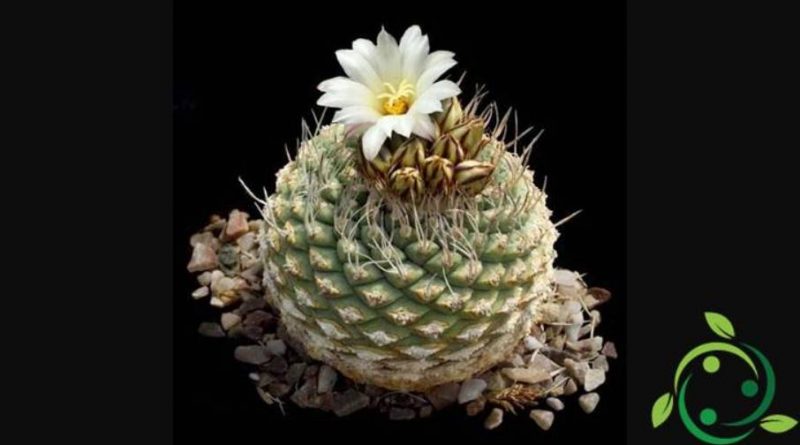How to grow Strombocactus
How to grow Strombocactus
Strombocactus is a succulent plant belonging to the Cactaceae family.
A unique species belongs to this genus, which is Strombocactus disciformis (DC.) Britton & Rose.
It is a plant originating from Mexico and with precisions in the regions of Hidalgo, Guanajuato, Mexico and Querétaro, where it is found mainly on cliffs and steep with calcareous soil, at altitudes between 1000 and 1600 m above sea level.
Strombocactus is a small plant with a cylindrical, fleshy and flattened stem, sometimes hollowed out in the center with the presence of fluff, especially in old plants. The stem has flat tubercles on the upper side and carinated on the lower side, arranged in a spiral, of a greenish gray color, 5–7 mm long and 6–12 mm wide.
At the top of the tubercles are the areolas which are provided with 1-4 spines usually erected in adult plants, light gray with dark tip. The spines are present only on young tubercles and over time they fall, so they are not at the base of the plant.
At the apex of the stem, flowers are formed that are creamy yellow or deep pink in color, depending on the subspecies.
These are funnel-shaped with a diameter of 2-3.5 cm. The fruits are elongated, dehiscent, semicarnose, magenta-colored berries, with the remains of a persistent perianth.
The roots are fleshy and almost tuberous.
In this card we will see how to grow Strombocactus taking into account its climatic and soil needs.
For cultivation, which can also be done in pots, we recommend a mixed substrate between sand and gravel with 30% of well humified organic substance.
This will allow a good drainage which will help the plants to avoid rots that would quickly lead them to death.
For its cultivation the Strombocactus, being a succulent plant, needs few waterings. Water supplies must be made when the substrate has completely dried. Irrigation should be done from spring to autumn, suspending this practice in winter with the arrival of the first cold weather.
As far as reproduction is concerned, this occurs by sowing in wet sand, with a luminous position but not in direct sunlight, at a temperature that must be kept around 23 ° C. remember that they are very slow growing plants.
Furthermore it is underlined how this plant is among the genera included in the CITES Appendix I (Convention on international trade of endangered species) for which it is forbidden to reproduce and sell it without the authorization of the State Forestry Corps.

